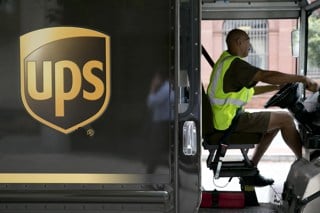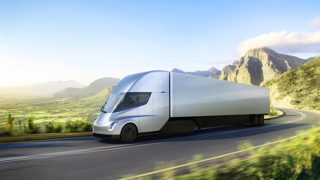New charging technology that overcomes the challenge of simultaneously recharging an entire fleet of electric vehicles (EVs), without the need for the expensive upgrade to the power supply grid, has been deployed by a UPS-led consortium.
It claims the system signals the beginning of the end of a reliance upon traditional combustion engine powered vehicles by allowing UPS to increase the number of EVs operating from its central London site from the current limit of 65 to all 170 trucks based there.
This major advance is the result of the ‘Smart Electric Urban Logistics (SEUL)’ project with UK Power Networks and Cross River Partnership, with funding secured from the UK’s Office for Low Emission Vehicles (OLEV).
“UPS thinks this is a world first, right in the heart of a mega-city. We are using new technology to work around some big obstacles to electric vehicle deployment, heralding a new generation of sustainable urban delivery services both here in London and in other major cities around the world,” said Peter Harris, director of sustainability, UPS Europe.
“Electric vehicles are an integral component within UPS’s alternative fuel and advanced technology fleet.
“Our collaboration with UK Power Networks and Cross River Partnership marks a major turning point in the cost effective deployment of electric vehicles which in turn will play a key role in ensuring the global trend toward urbanization is sustainable.
“We are applying new technology to make the charging process smarter and our delivery service cleaner.”
As a result of this initiative, UPS believes the day is rapidly drawing closer when the acquisition costs to put an electric vehicle on the road, including those associated with getting power to the vehicle, will be lower than the equivalent costs of its diesel counterpart.
This development will be instrumental in enabling electric vehicles to be deployed at scale in the world’s cities that is an essential component of tackling the air quality challenges in these urban environments, it says.
“This trailblazing solution has enabled UPS to increase their electric vehicle fleet without upgrading their network connection, paving the way for future electrification of delivery vehicles in our cities,” said Ian Smyth of UK Power Networks Services.
“We are delighted to work with UPS and our other partners to design, deliver and operate this sustainable smart-grid solution. This project will deliver a huge impact on improving the air quality for Londoners and contribute to UPS’s legacy of sustainability.”
A key part of this initiative is the use of onsite energy storage batteries. Although new batteries have been deployed at this stage, it is envisaged that in the future these could be second-life batteries that have already been used in a UPS EV.
Together with the smart-grid, this will pave the way toward a UPS EV infrastructure strategy that can dynamically make use of a conventional power upgrade, a smart grid, onsite storage, and in many cases, local power generation including solar and other alternative sources.
“Our previous work on electric freight vehicles has shown that local grid infrastructure constraints are one of the main barriers to their large-scale uptake,” said Tanja Dalle-Muenchmeyer, programme manager electric freight at Cross River Partnership.
“We need to find smarter solutions to electric vehicle charging if we want to benefit from the significant air quality and environmental benefits these vehicles offer, and we believe this is such a solution.”
UPS has a long history with EVs, having first introduced them into its fleet in the 1930s, and, reintroduced modern EVs in 2001.
Currently, UPS has more than 300 electric vehicles and nearly 700 hybrid electric vehicles deployed in Europe and the US.
The company recently ordered 125 new fully-electric Semi tractors to be built by Tesla in 2019, one of the largest pre-orders to date. Additionally, last September, UPS announced it will become the first commercial customer in the US to start using three medium-duty electric trucks from Daimler Trucks Fuso brand, called the eCanter.























Login to comment
Comments
No comments have been made yet.